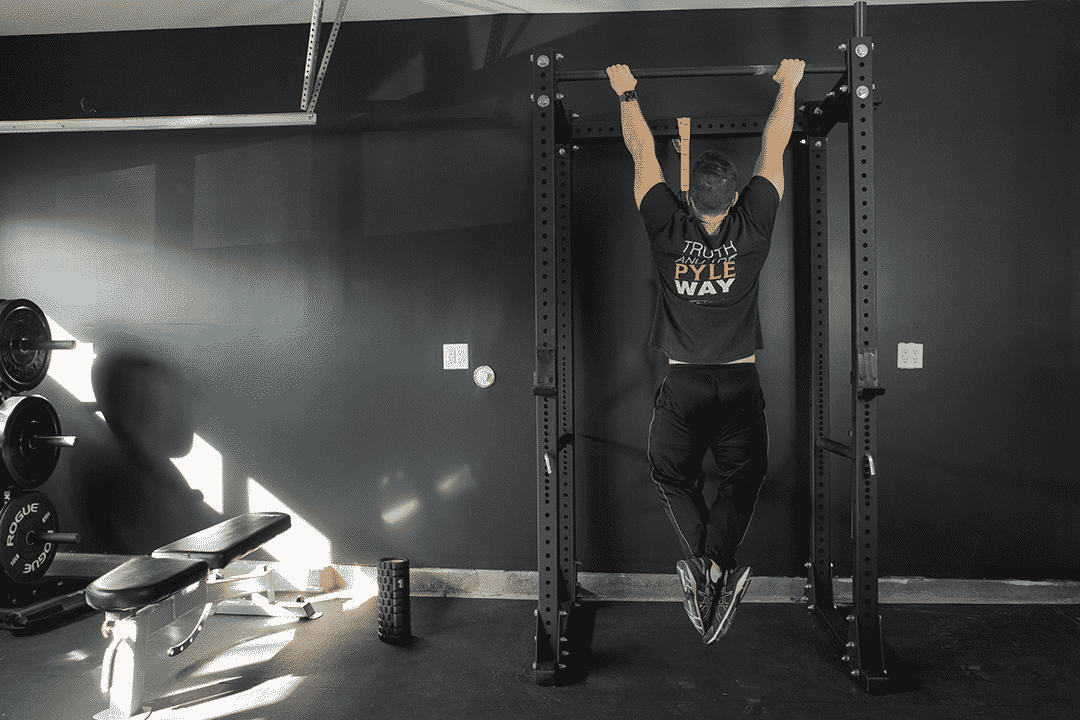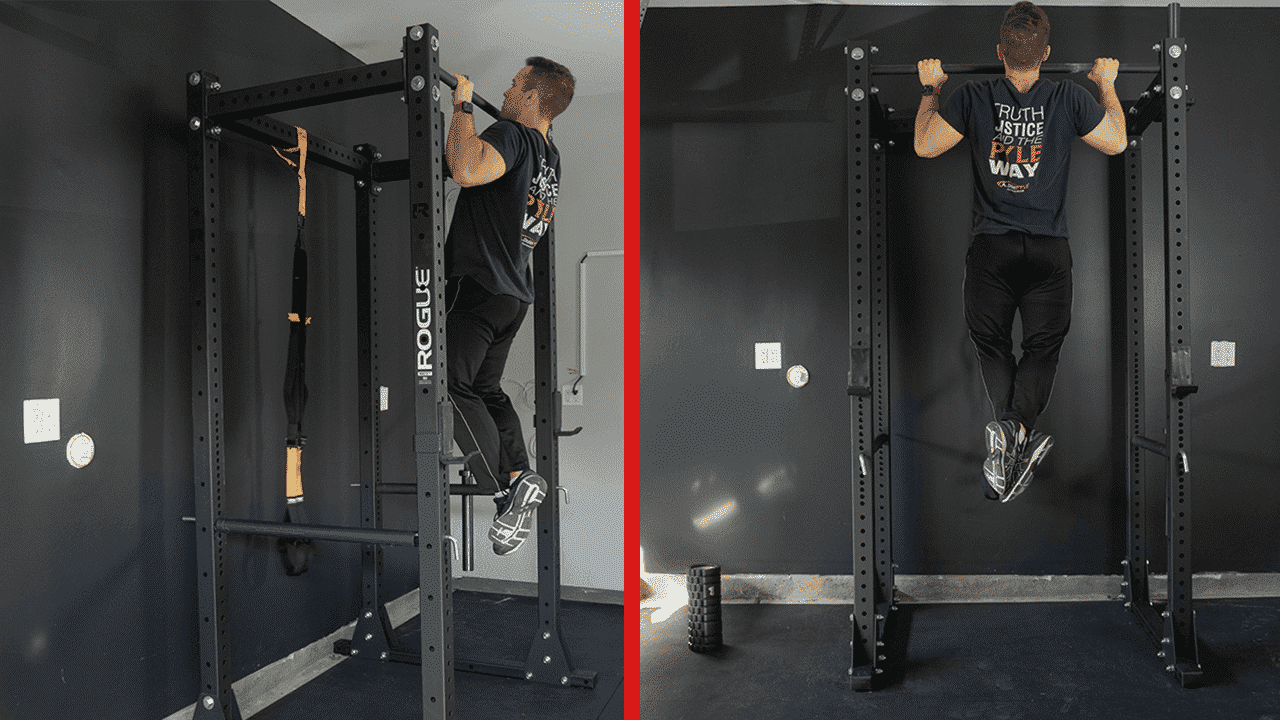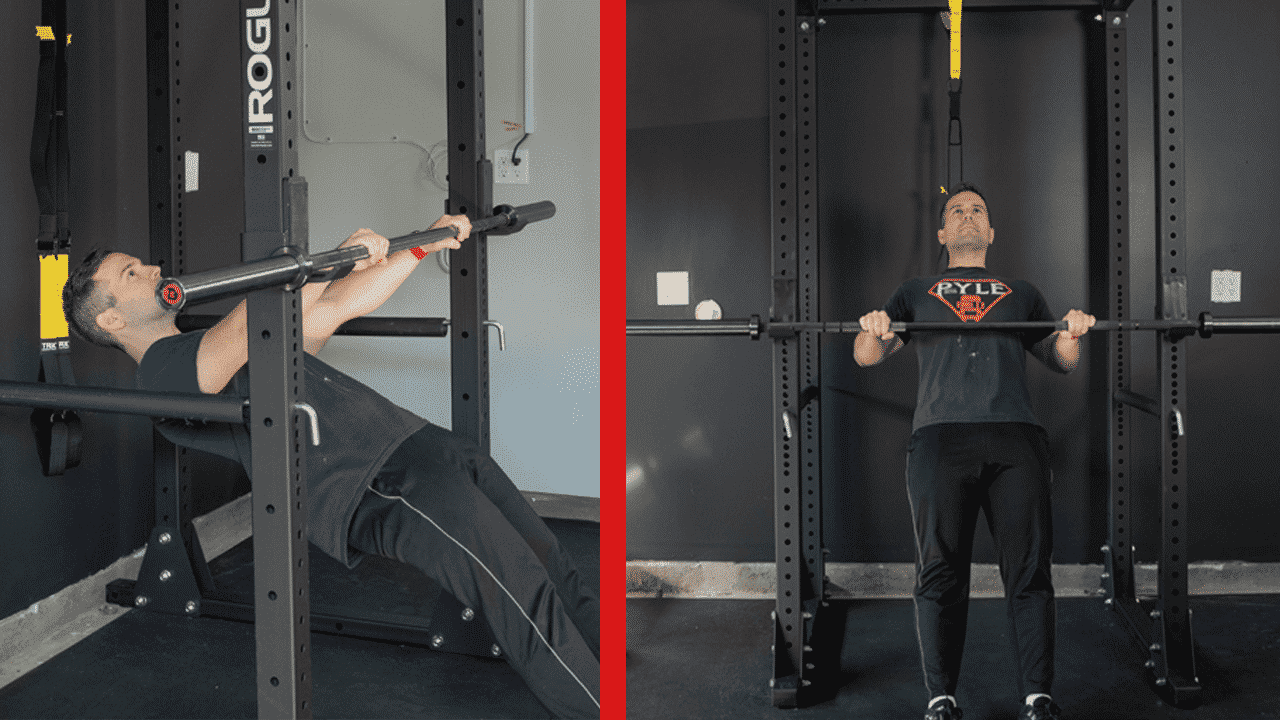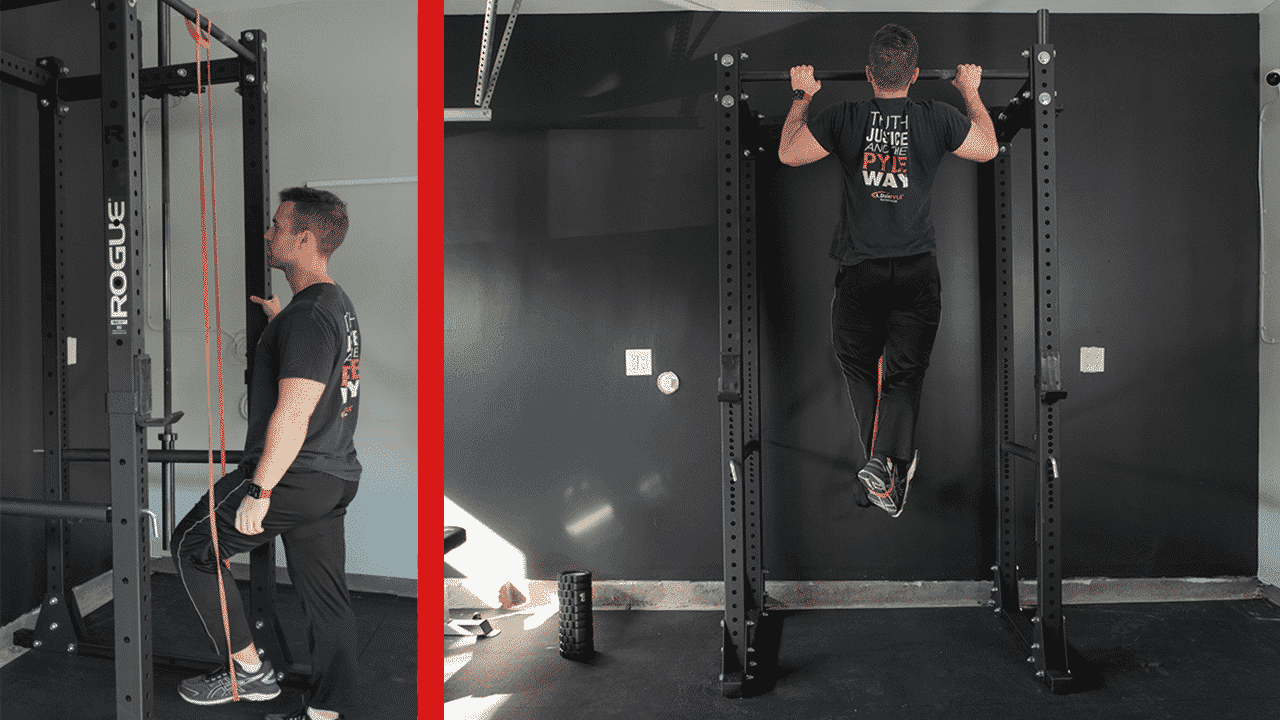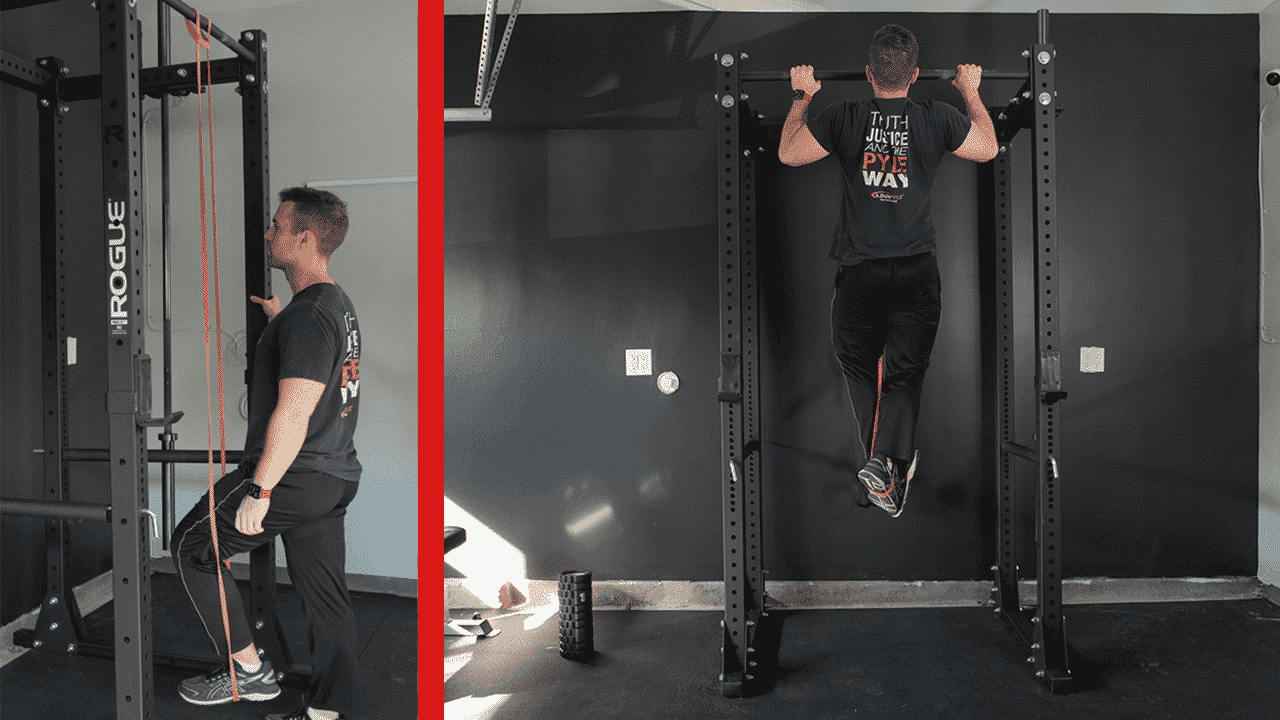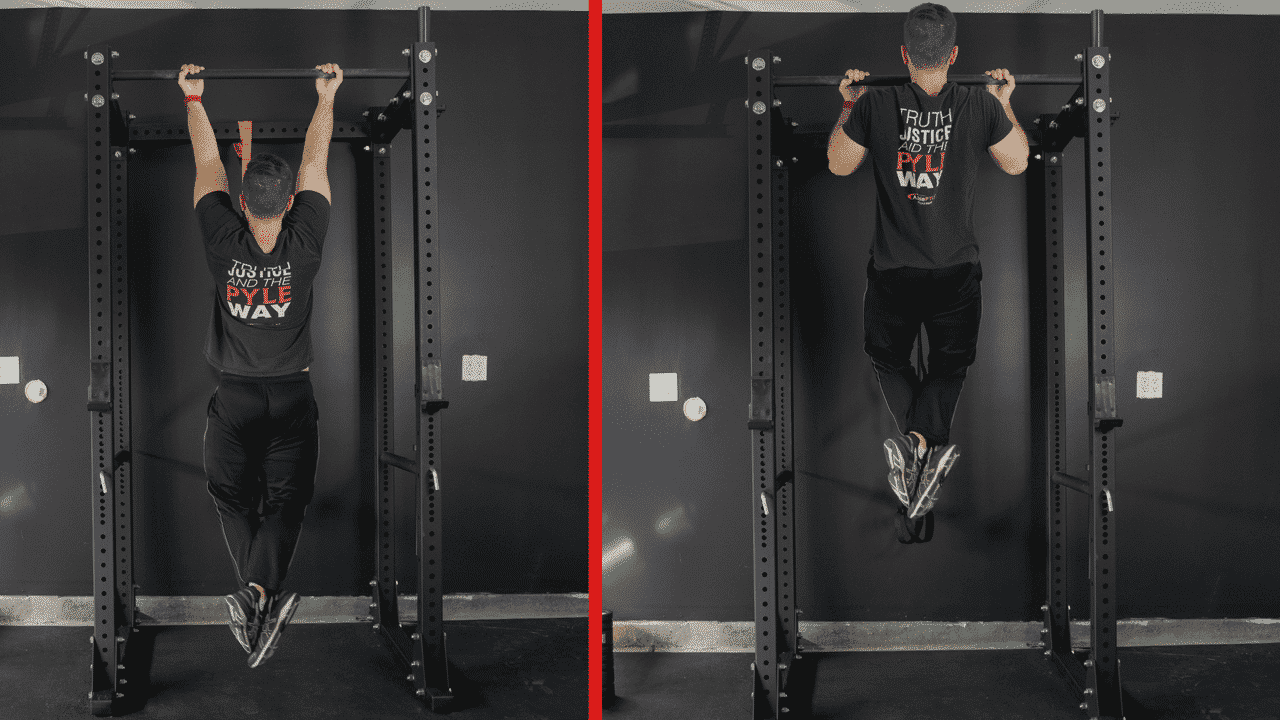It can be a confidence killer when you don’t even attempt to do a pull-up because you’re afraid you might not be strong enough to do it…yet.
Before you go doubting yourself, remember that everyone starts at zero. We all have to start with the basics to get stronger.
This guide shows step-by-step how to do pull-ups for beginners correctly and which pull-up variation is right for your current experience level.
Which Muscles Do Pull-ups Work?
The pull-up exercise works a variety of muscles both directly and indirectly.
You have primary muscle groups doing most of the work and ancillary muscles supporting and stabilizing the movement.
Primary Muscles Worked During Pull-ups
- Lats
- Traps
- Rhomboids
- Teres Major
- Delts
- Biceps
Secondary Muscles Worked During Pull-ups
- Abs (used for stabilization)
- Glutes (used for stabilization)
How To Correctly Do Pull-ups for Beginners
If you take the time to master the fundamentals of this movement, you’ll be successful at getting stronger.
You’ll also decrease your chance of injury and potential for developing muscle imbalances (which is never a bad thing).
Exercise Setup
- Start by spacing your hands evenly on the bar, roughly shoulder-width apart.
- Cross your ankles while keeping your legs mostly straight (knees can be slightly bent) and your body fully extended.
Exercise Execution
- While engaging your abs, squeeze your glutes and pull your entire body towards the bar.
- Continue to pull your body towards the bar until your chin is level with or above the bar.
- In a controlled manner, slowly lower your body back into the starting position.
Coaching Cues from Ant
- Control your movement speed. Try to avoid swinging your body or legs when executing the movement.
- Focus on squeezing your shoulder blade together at the top of the movement & fully extending your elbows at the bottom to train throughout the full range of motion.
- Engage your abs by pulling your belly button towards your spine throughout the entire movement.
Top 4 Pull-Up Variations for Beginners
Developing relative strength (think the total amount of your body can light relative to your weight) takes time, patience, and practice.
This is NORMAL.
So, we need to select a pull-up variation that will allow us to safely and efficiently develop our strength until we can progress to a traditional pull-up.
Below you’ll see four different types of pull-ups for beginners (all of which you can modify at home) in the easiest to most difficult to perform.
Inverted Row
This pull-up variation will help develop some of the same muscles used in pull-ups, such as grip strength, biceps, and the posterior muscles of your back.
The difference is you are only utilizing a fraction of your body weight as resistance.
Inverted Rows are one of the easiest pull-ups for beginners to start without needing much prior training experience or relative strength.
Equipment Needed (Only One Option Required)
- TRX Straps (properly anchored)
- Barbell (properly anchored/weighted)
- Pull-Up Station
Refer to my TRX setup post to see how to set up this exercise properly. The mechanics are similar if you use TRX straps versus a pull-up bar for support.
Band Assisted Pull-up
This particular pull-up variation provides a similar benefit compared to Eccentric Band-Assisted Pullups.
However, you will maintain a normal tempo while doing these and NOT overemphasize the negative position of this exercise.
Equipment Needed
By using the strength bands for the support, you are reducing the total body weight that you need to pull up. If you aren’t familiar with resistance strength bands, we cover them in detail in this post!
Eccentric (Negative) Band Assisted Pullup
Of all these pull-up variations, this alternative will help you focus on the portion of the movement where you are controlling the lowering of your body back to the starting position.
By going slower, you are creating more tension in the muscle, which can help with hypertrophy (muscle growth).
Equipment Needed
When focusing on the eccentric (negative) portion of the pull-up exercise, you are creating more time under tension for your muscles. This means you are making your muscles work harder without increasing resistance, which may help with growth.
Chin-up
This alternative works similarly to muscle groups as a pull-up but puts more emphasis on the biceps.
Equipment Needed
Chin-ups are comparable to traditional pull-ups except that you have a supinated (palms up) grip. This creates more tension and emphasis on your biceps which may be easier for you than its traditional counterpart.
Frequently Asked Questions About Pull-ups For Beginners
Below are just a few frequently asked questions we’ve gathered that you still might be wondering after reading this post.
Will Pull-Ups Help Build Muscle?
Yes.
If you are following a workout protocol that focuses on a *progressive overload protocol and consuming adequate calories then you will both build muscle & get stronger in the process.
How Do I Build Enough Strength To Do Pull-Ups?
If you are just getting started and don’t have enough strength to do traditional pull-ups there are several variations (mentioned above) you can do instead.
Try these out to determine the alternative that best matches your current strength level.
- Inverted Row / TRX Low Row
- Band Assisted Pull-up
- Band Assisted Eccentric Pull-up
How To Do Pull-Ups At Home
If you don’t have access to a traditional gym setup there are a few options to still incorporate pull-ups into your home workout regimen.
Here are a few key pointers to help you create the right setup to include pull-ups in your home workout.
- Determine how much workout space you have to utilize
- Decide on a specific $ amount you are willing to invest
- Choose the best option based on answers to #1 and #2
Luckily, we have hand-selected recommendations that fit different budgets & physical space restrictions.
| Best Overall – Versatility | TRX PRO4 System |
| Best For Small Spaces | Rogue Jammer Pull-up Bar |
| Best Alternative | Rogue Pull-up System |
| Best For Large Spaces | Weider Pull-up Tower |
Final Thoughts
Pull-ups are a great foundational movement that works multiple muscle groups including your arms, back, and core (used for stability).
Whether you’re looking to get stronger or build more muscle pull-ups are a key functional movement worth including.
So, remember…
- Always aim for good movement control and proper form when doing pull-ups
- Select the right pull up variation for your level of experience and strength
- Incorporate progressive overload protocols into your training to see the best strength and muscle growth gains.
Good luck and talk soon!

